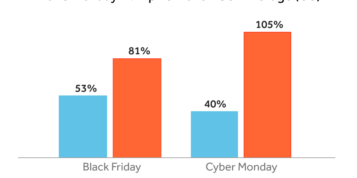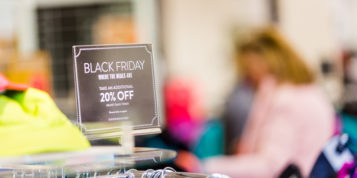As the year comes to an end, retail marketers are looking ahead to identify more ways to generate growth in Q1 and beyond. To succeed, retail marketers must be prepared to look beyond the confines of in-store vs. online to appeal to ever-evolving shopping behaviors.
The Convergence of Clicks & Bricks
The lines between ecommerce and in-store shopping will continue to blur in 2020 as omnichannel shopping becomes the norm. More purchases than ever before are influenced by digital touchpoints, whether the actual purchases take place online or in-store.
At a basic level, the omnichannel shopping trend is a call for marketers to employ smarter location and contextual targeting tactics within their ad campaigns. At an advanced level, it’s a warning that new competitors will emerge, as traditional retailers are forced to become more digitally savvy and direct-to-consumer (DTC) brands establish experiential storefronts.
For brick & mortar retailers, it’s time to conduct an audit of the shopper experience, taking into account:
- 59% of shoppers would like to checkout with their phone
- 56% of shoppers would like interactive, shoppable screens to help them through their in-store selection process
- 54% of shoppers leave stores because they can’t find what they’re looking for
- 36% of shoppers would like to use VR within stores to experience products in different settings
- 22% of shoppers abandon their purchase when checkout lines are too long
Shoppers expect as much convenience & autonomy in-store as they do online, and the causes of abandoned carts deserve attention whether they are material or virtual.
Retailers have long known that the experience within their stores can greatly affect shopping behaviors. Lighting, music, end caps, and more can affect both the mood and what lands in the shopping cart. And while you can’t control the lighting or the music, the user experience is just as important for shoppers online. Perhaps it is no surprise, then, that experientially focused pop-up shops are garnering so much consumer attention — and revenue.
Spotting the Pop-up Shopper
As direct to consumer (DTC) brands are exploring pop-up shops, another trend is emerging that all marketers should take note of. Individuals who flock to pop-up stores aren’t the typical brick & mortar shopper. They’re digitally-savvy shoppers who are quick to subscribe & hard to find.
Indeed, half of individuals who frequent pop-up stores are also patrons of monthly subscription boxes, and over a third (38%) shop online every week. Based on this, it would behoove marketers of subscription boxes to target their advertising campaigns to digital placements near pop-up shops & to devices belonging to individuals who have frequented these stores.
The demand for increased convenience in shopping isn’t going anywhere. In fact, it will likely continue to increase, and retailers will need to keep up — across screens, channels, and physical locations.





